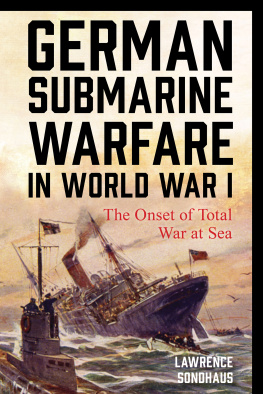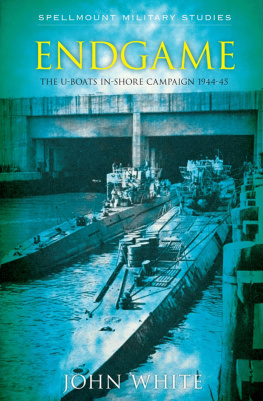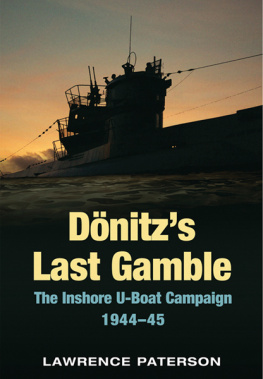Norman Franks - Coastal Commands Air War Against the German U-Boats
Here you can read online Norman Franks - Coastal Commands Air War Against the German U-Boats full text of the book (entire story) in english for free. Download pdf and epub, get meaning, cover and reviews about this ebook. year: 2014, publisher: Pen and Sword, genre: Non-fiction. Description of the work, (preface) as well as reviews are available. Best literature library LitArk.com created for fans of good reading and offers a wide selection of genres:
Romance novel
Science fiction
Adventure
Detective
Science
History
Home and family
Prose
Art
Politics
Computer
Non-fiction
Religion
Business
Children
Humor
Choose a favorite category and find really read worthwhile books. Enjoy immersion in the world of imagination, feel the emotions of the characters or learn something new for yourself, make an fascinating discovery.
- Book:Coastal Commands Air War Against the German U-Boats
- Author:
- Publisher:Pen and Sword
- Genre:
- Year:2014
- Rating:4 / 5
- Favourites:Add to favourites
- Your mark:
- 80
- 1
- 2
- 3
- 4
- 5
Coastal Commands Air War Against the German U-Boats: summary, description and annotation
We offer to read an annotation, description, summary or preface (depends on what the author of the book "Coastal Commands Air War Against the German U-Boats" wrote himself). If you haven't found the necessary information about the book — write in the comments, we will try to find it.
Coastal Commands Air War Against the German U-Boats — read online for free the complete book (whole text) full work
Below is the text of the book, divided by pages. System saving the place of the last page read, allows you to conveniently read the book "Coastal Commands Air War Against the German U-Boats" online for free, without having to search again every time where you left off. Put a bookmark, and you can go to the page where you finished reading at any time.
Font size:
Interval:
Bookmark:

First published in Great Britain in 2014 by
PEN & SWORD AVIATION
an imprint of
Pen & Sword Books Ltd,
47 Church Street,
Barnsley,
South Yorkshire,
S70 2AS
Copyright Norman Franks, 2014.
A CIP record for this book is available from the British Library.
ISBN 978 1 78383 182 1
eISBN 9781473841642
The right of Norman Franks to be identified as Author of this Work
has been asserted by him in accordance with the Copyright,
Designs and Patents Act 1988.
All rights reserved. No part of this book may be reproduced or
transmitted in any form or by any means, electronic or mechanical
including photocopying, recording or by any information storage and
retrieval system, without permission from the Publisher in writing.
Printed and bound by CPI UK
Pen & Sword Books Ltd incorporates the Imprints of
Pen & Sword Aviation, Pen & Sword Maritime,
Pen & Sword Military, Wharncliffe Local History, Pen & Sword Select,
Pen & Sword Military Classics and Leo Cooper.
For a complete list of Pen & Sword titles please contact
Pen & Sword Books Limited
47 Church Street, Barnsley, South Yorkshire, S70 2AS, England
E-mail: enquiries@pen-and-sword.co.uk
Website: www.pen-and-sword.co.uk
Contents
Photographs:
Over many years of study about the air war waged by RAF Coastal Command against Germanys U-boats, and having written several books on the subject, I have accumulated several hundred photographs. In the main these came from members of RAF aircrew engaged in the anti-submarine war, I having met many and corresponded with dozens all over the world. Others came from correspondence with German U-boat men. Several came from the late Chaz Bowyers collection, a friend and fellow author, who was himself engaged in many aspects of Coastal Commands history. It is not surprising that almost all former RAF aircrew had kept copies of official photos taken by their aircraft cameras during and after attacks. These men often flew hundreds of hours over empty seas, so if they came into contact with a U-boat it was something to remember and have recorded. Any number took their own personal cameras along and would be able to snap events, certainly after the attack, being free from danger if the U-boat was going down or being abandoned. We historians are ever grateful for their youthful enthusiasm for recording such events.
Introduction
This book summarises the story of how RAF Coastal Command overcame the German U-boat danger during the Second World War and how the escalation of the U-boat war promoted the development of anti-submarine warfare, leading to victory over this menace in the Atlantic.
At the start of the war, RAF Coastal Command had virtually no real chance of either finding or sinking Germanys submarines, but within a short period of time, the boffins came up with new methods of detection and of delivering deadly ordnance with which to sink this underwater menace.
It took the men of Coastal Command long hours patrolling over an often hostile sea, in all types of weathers, but their diligence, perseverance and dedication won through, saving countless lives of both merchant and navy seamen out in the cold wastes of the Atlantic, contributing much to the final victory over Nazi Germany.
Chapter One
The Cinderella Service
With the outbreak of the Second World War, the three major RAF commands, Fighter, Bomber and Coastal, had all been victims of the inter-war years of cuts and reduced development. However, in the final years of peace, some improvements had been made and others planned, but priority had been focused on Fighter and Bomber Commands. Coastal Command was last in the food chain, so, in September 1939, it was a small and largely obsolescent force with aircraft that, in todays terms, would be viewed as not fit for purpose.
Coastal Commands main function was to patrol and defend the seas around the British Isles, and off Britains base on Gibraltar while also safeguarding the passage through the Straits of Gibraltar into the Mediterranean. As the war at sea intensified, Coastal had squadrons based on Iceland and, later, on the Azores. There were, of course, other maritime units further afield, but this book is concentrated on the exploits of the men of Coastal who found themselves adversaries to Germanys submarine force of Unterseeboote the U-boats.
No doubt the thinking at the War Office, the Admiralty and the Air Ministry, was that the main danger was likely to come from German bombers flying against Britain, and the need to have a reasonable force to strike back. Unless things changed dramatically, Coastal Command would still be able to continue its primary role of reconnaissance in support of the Royal Navy, while its ships would be able to contain to a large degree any submarines that tried to exit northern German ports. In this they would be aided by Coastal Command aircraft which would search the seas off places such as Bremen or Wilhelmshaven, and direct RN surface vessels onto them.
This was fine in theory, but Germany had been successful in evading British warships during the First World War and had taken a great toll of Allied shipping in that conflict. Exactly how the Navy and the RAF were going to do this twenty years on, with a reduced number of ships and aircraft that were little improved from 1918, is not clear. In the Great War RNAS and then RAF coastal aircraft were mainly large seaplanes such as Curtiss H4 and H12 flying boats, the Felixstowe F2A flying boats, or the Short 184 floatplanes, for reconnaissance and anti-U-boat work. In 1939 the RAF still had large flying boats for reconnaissance and anti-submarine patrols, such as the Saro London, Short Singapore III and even a few obsolete Supermarine Stranraer flying boats.
Fortunately Short Brothers had introduced their Empire flying boats in the 1930s for passenger flying and this proved an ideal long-range aircraft for Coastal Command renamed the Sunderland. They had entered RAF service in 1938 and when war was declared there were three Sunderland squadrons in operation, and the type was to remain on active service throughout the war, gaining much success and reputation against the U-boats. Apart from this, there were a few landplanes pressed into maritime service, such as the Avro Anson for reconnaissance, but more widely known as a training machine, and also the Lockheed Hudson, the first American-built aeroplane to see operational service with the RAF in the Second World War. The Hudson proved a maid of all work, but also found a niche in anti-submarine work, not only with Coastal Command but with other maritime organisations in the Middle and Far East, and East Africa.
The main problem, however, faced by the crews of anti-submarine squadrons whatever aircraft they flew, was (a) how to find a U-boat and (b), if they did, how to sink it. By their very nature submarines are often underwater and therefore out of sight. Occasionally, if one was lucky enough to fly over a submerged boat, certain conditions might allow sight of it, but a vigilant airman had to be right above it and be looking in the exact spot, and this was generally only for a fleeting moment. At this early stage of the war there was no air-to-surface radar. Another piece of luck was if the submarine captain happened to raise his periscope at just the wrong moment, and again a vigilant airman might spot it among the white horses of wave-tops, always supposing again he was looking in the right direction. Submarines often sailed on the surface of the sea for two main reasons. One, they had to come up to re-charge their batteries and suck in fresh air for the crew. Two, a boat could sail faster on the surface than below it, and if there was no apparent surface danger, a captain would choose to cover more ground in the hope of locating enemy shipping. If again, the aircraft spotted this surfaced sub quickly and its captain reacted equally quickly, an attack might be attempted. However, on the surface the U-boat would have several men on look-out duty and their lives depended on their keen eyesight. As soon as the alarm was sounded, the men in the boats conning tower rapidly went down through the hatch, even as the boat was making a crash-dive below the waves.
Next pageFont size:
Interval:
Bookmark:
Similar books «Coastal Commands Air War Against the German U-Boats»
Look at similar books to Coastal Commands Air War Against the German U-Boats. We have selected literature similar in name and meaning in the hope of providing readers with more options to find new, interesting, not yet read works.
Discussion, reviews of the book Coastal Commands Air War Against the German U-Boats and just readers' own opinions. Leave your comments, write what you think about the work, its meaning or the main characters. Specify what exactly you liked and what you didn't like, and why you think so.














